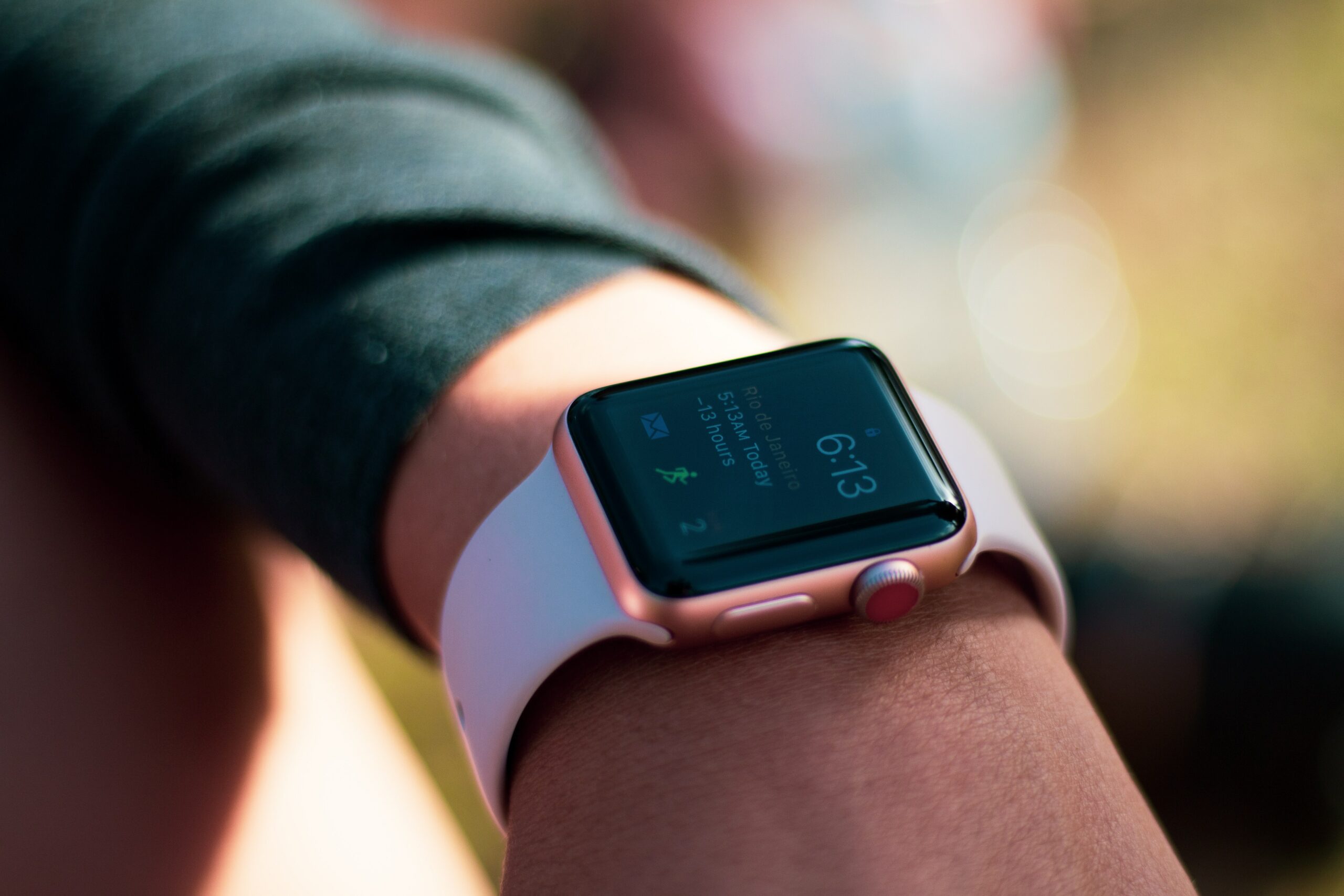Wearable devices are almost everywhere these days. From smart watches to rings, glasses to footwear and other items of clothing, these devices collect, analyse and record data on all manner of things. In the context of health, these devices record movement (via the use of tiny accelerometers) and vital signs like heart rate and blood oxygen levels (via the use of LEDs). In some instances, they can even provide biofeedback to the wearer, such as haptic feedback (an example of this relevant to people with Parkinson’s is the CUE1 device, which uses vibrotactile stimulation to improve motor performance and alleviate freezing of gait). And the progress being made in the analysis and interpretation of the rather considerable amounts of data collected from such devices has been phenomenal (note the FDA approval of the Series 4 Apple Watch as a medical device capable of recording an ECG and detecting arrhythmias, now already five years ago, with other brands following suit).
One of the major challenges in developing disease-modifying therapies for patients diagnosed with Parkinson’s disease is that, by the time of clinical diagnosis, the disease has already progressed unchecked for many years, causing considerable damage. The best chance of success in drug trials relies on identifying patients at the very earliest stage, experiencing very early pathological changes and symptoms. Some of these ‘prodromal’ symptoms are well known—loss of smell, constipation, REM sleep behaviour disorder—but although highly predictive in some instances, they aren’t exclusive to Parkinson’s. However, progress is being made in this area through the development of predictive models that incorporate genetics, lifestyle information, prodromal symptoms and digital measures like accelerometry data.
A research group in Cardiff1 recently assessed the usefulness of digital mobility measures to identify prodromal Parkinson’s disease in the general population. Accessing the UK Biobank (a large, rich, and long-term biomedical database), they obtained accelerometry data evaluating sleep, sedentariness, and physical activity for 33,009 members of the general public, hour by hour, over a 7-day period. Of these, 273 participants had a diagnosis of Parkinson’s at the time of or within two years after accelerometry data collection (PD group), while a further 196 went on to receive a diagnosis of Parkinson’s >2 years after data collection (prodromal group). Some clever maths, machine learning and training of models later, they were able to demonstrate that measures of physical activity could be used to not only predict those with a clinical diagnosis of Parkinson’s, but also those in the prodromal group whose data were collected at least two years prior to diagnosis. Indeed, their model was even more predictive than other models based on genetics, lifestyle and reported symptoms.
One strength of this study was the large population studied, and one advantage of using wearables (as opposed to interview) is the elimination of so-called “recall bias,” where individuals may not accurately recall and report symptoms. As with any study, there were of course limitations—the definition of prodromal used in this study was necessarily a practical one given the lack of clear diagnostic criteria. Thus, it is likely that at least some of the people in the prodromal group had undiagnosed Parkinson’s, potentially explaining why the digital measures were highly similar in the prodromal and PD groups.
It is also important to recognize that a wide variety of factors—including age and other concurrent conditions (comorbidities)—affect physical activity and mobility. It will thus be important to combine data from wearables with data from other sources (such as known predictors of risk of Parkinson’s and biomarkers) to further optimise the ability to identify those with prodromal Parkinson’s among a general population. That said, given the relatively low-cost and near universal availability (both of which are barriers to widespread biomarker assessment) of wearable devices tracking movement, this recent study provides a potentially very useful screening tool to identify people experiencing the very earliest stages of Parkinson’s who could then become participants in clinical trials of disease-modifying therapies.
1 Schalkamp, AK., Peall, K.J., Harrison, N.A. et al. Wearable movement-tracking data identify Parkinson’s disease years before clinical diagnosis. Nat Med 29, 2048–2056 (2023). https://doi.org/10.1038/s41591-023-02440-2
